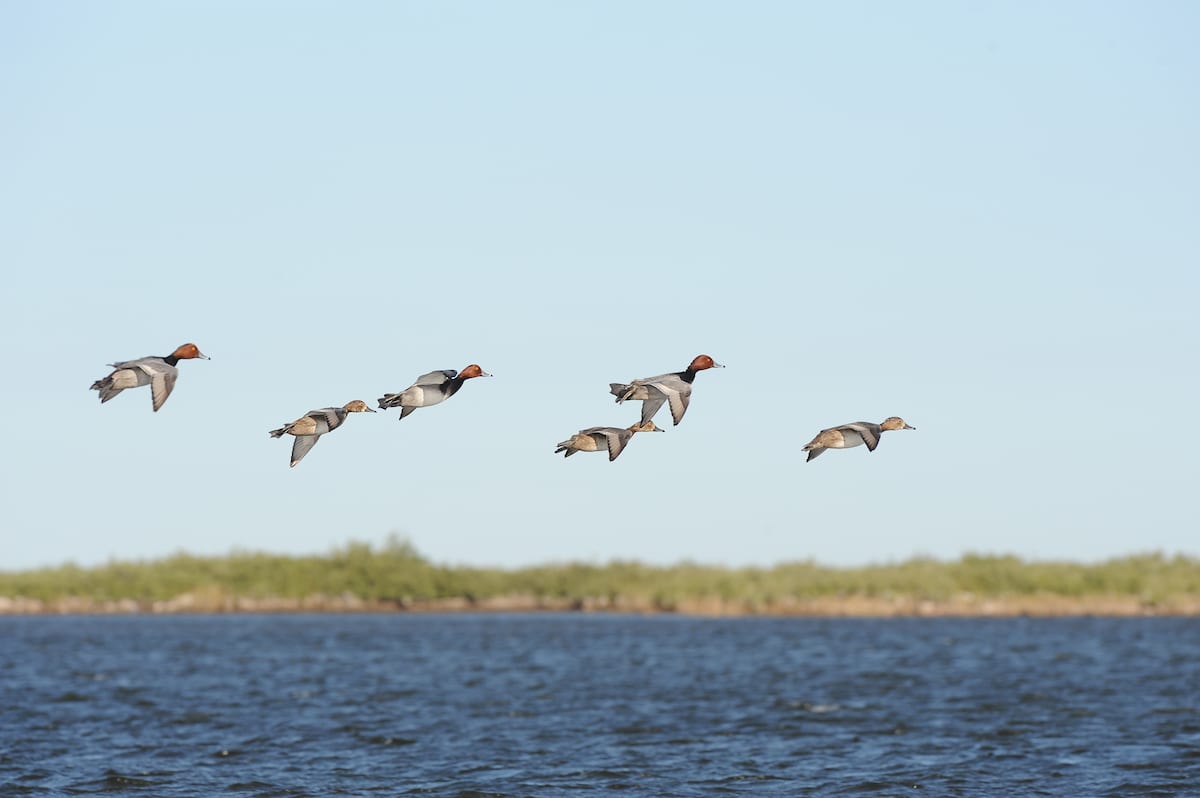Good season still expected
Story by Craig Nyhus, Lone Star Outdoor News
This story originally appeared in the Aug. 27 issue of LSON
The best duck-hunting seasons usually have ample numbers of juvenile birds. While plenty of ducks will return to Texas this fall, the numbers of young birds will likely be down.
Delta Waterfowl, in its 2021 Fall Flight Forecast, said all indications point to poor duck production, due to dry breeding conditions across the Prairie Pothole Region.
“The Prairie Pothole Region is almost universally dry,” said Delta Waterfowl’s president and chief scientist, Frank Rohwer. “There will be far fewer juveniles in the fall flight.”
Kevin Kraii, the waterfowl program leader for Texas Parks and Wildlife Department, said Texas hunters may not even notice the drop.
“The good news is we are on the heels of two to three years of really good production,” he said. “With one year of low productivity, you may not even be able to detect it.”
Fewer juvenile birds along with an abundance of older, smarter birds could impact hunter success.
Speaking from the Central Flyway meeting on Aug. 22, Kraii said the production, despite the drought in typical breeding regions, is thought to be better than expected.
“Banding crews are surprised at the productivity they are seeing, especially with bluewings,” he said. “It wasn’t a complete bust — there are a lot of areas in North America where ducks can produce.”
Kraii said mallard declines may be as low as 5 percent, and Canadian ponds were down 14 percent.
Overall, while Delta Waterfowl forecasts a smaller fall flight than waterfowl hunters have experienced for years, blue-winged teal, green-winged teal and gadwall had closer to average production. Other species, especially pintail, wigeon, canvasbacks and mallards, likely fared worse.
Rohwer said many birds overflew the prairies, and those that stayed showed reduced renesting effort and low brood survival.
But Kraii said ducks, especially hens, adapt well to changing conditions, and likely more than expected found areas to nest.
“They have wings for a reason,” he said. “They adapt.”
Usually, hunters and wildlife officials can look to more precise information contained in the Waterfowl Breeding Population and Habitat Survey prepared by the U.S. Fish and Wildlife Service and Canadian Wildlife Service, but those haven’t taken place the last two years, reportedly due to the pandemic. Some state surveys were conducted, though, including North Dakota, were officials estimated an 80 percent decline in wetlands from 2020, and the breeding duck estimate of 2.9 million marks a 26.9 percent drop from last year.
For good news, even though older ducks are tougher to hunt, Delta Waterfowl said carryover ducks from consistent years of good production means that populations of adult, breeding ducks remain high, with long-term data indicating that most duck populations are well above average — including a 2019 estimate of 38.9 million breeding ducks, 10 percent above average.
For hunters worried about a shorter season and smaller bag limits, Kraii said that won’t happen in the foreseeable future.
“The liberal season is recommended again for next year,” he said. “If the drought persists, changes could happen down the road.”


